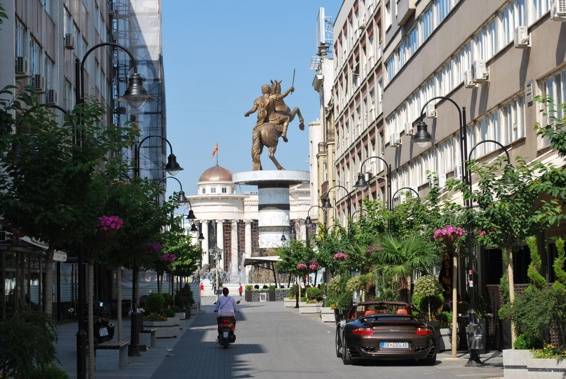
Amid the spoil of delights that revealed themselves on my two-week long Balkan Adventure with Trafalgar Tours, the North Macedonian capital of Skopje was one of the biggest surprise packages. Instantly appealing, Skopje brims with time-honoured charm and some quite recent epic transformations. There’s a distinct sense of quirkiness that adds to its overwhelming good looks. The pint-sized country dodged the ravages of war, after declaring its independence from Yugoslavia in 1991.
The biggest modern-day scrap the country has had to contend with was over formalising its official name. Three years ago, a decades-long dispute with Greece was finally resolved, which resulted in the Republic of Macedonia becoming the Republic of North Macedonia, in deference to Athens and the fact that a major northern region of Greece is called Macedonia. So North Macedonia it is, although most locals in Skopje insist on saying just “Macedonia.” Sun-kissed Skopje is a city of two distinct halves.
One half of the city is a sprawling Old Bazaar district steeped in Ottoman influence, while the other half is all polished facades, manicured parks and a dizzying overdose of sculptures and monuments, all erected as part of an extravagant urban project called Skopje 2014, geared at making the city appear ‘more classical’. Up to half a billion Euro was shelled out on this neoclassical makeover of Skopje, with over 100 sculptures recasting the streetscape and 20 new building facades transforming the skyline.
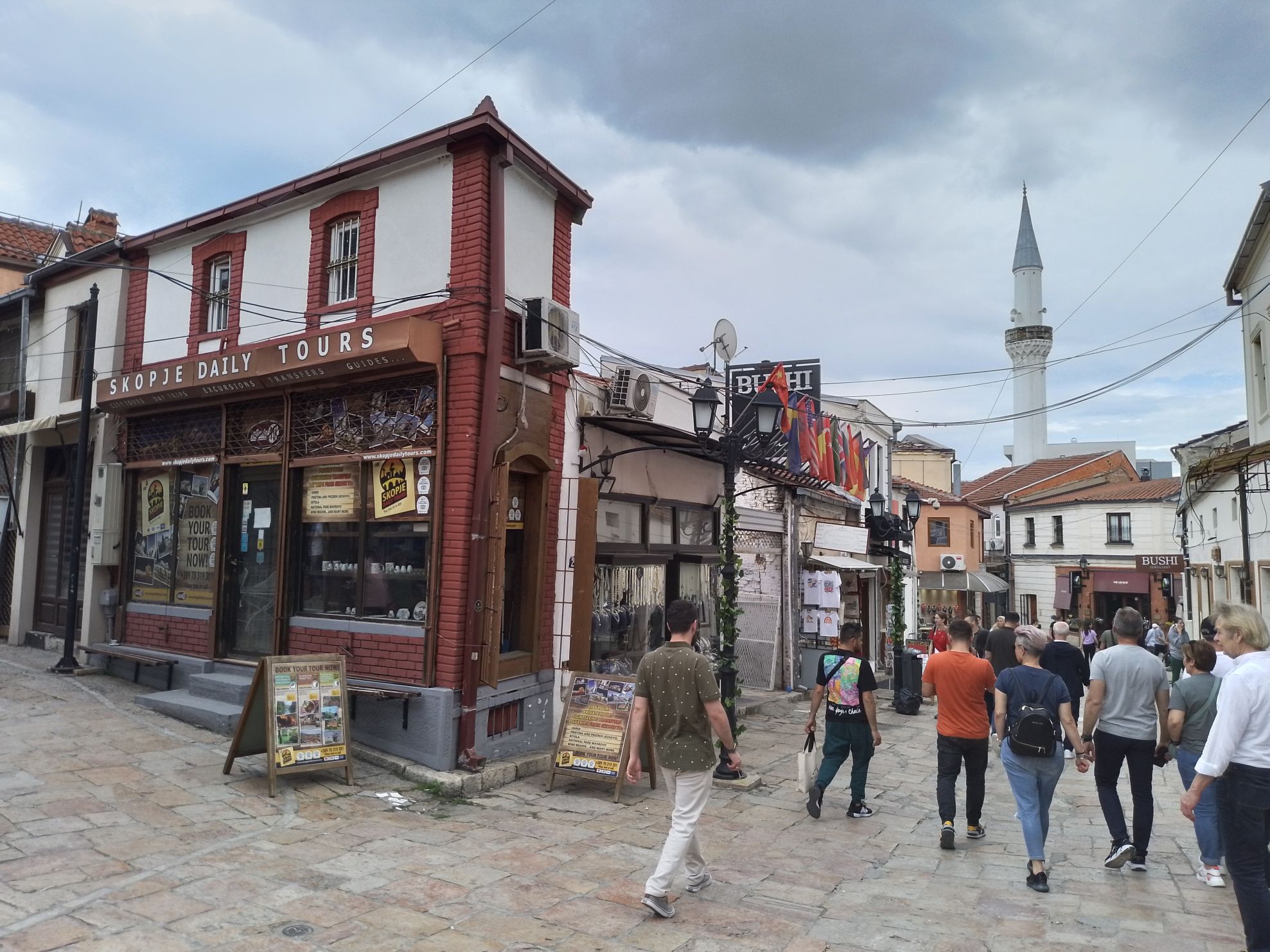 Photo / Mike Yardley
Photo / Mike Yardley
It was all geared at reaffirming North Macedonia’s history and identity. No matter where you go in downtown Skopje, there will be a statue looking at you. Whether they are riding a majestic horse, standing stoically or even shining shoes, the bronze and marble citizens of Skopje are thick on the ground. There’s even a bronze woman down by the river in a swimsuit, poised to jump into the water. I was tempted to push her in.
Start your Skopje exploratory at the monstrous cobbled sprawl of Macedonia Square, in the heart of the city. This colossal circular-shaped plaza is crowned with a gigantic statue known as the “Warrior on a Horse.” Yes, it’s the nation’s most famous son, the all-conquering Alexander the Great, immortalised by this oversized bronze statue, complete with frothy fountain and musical light show.
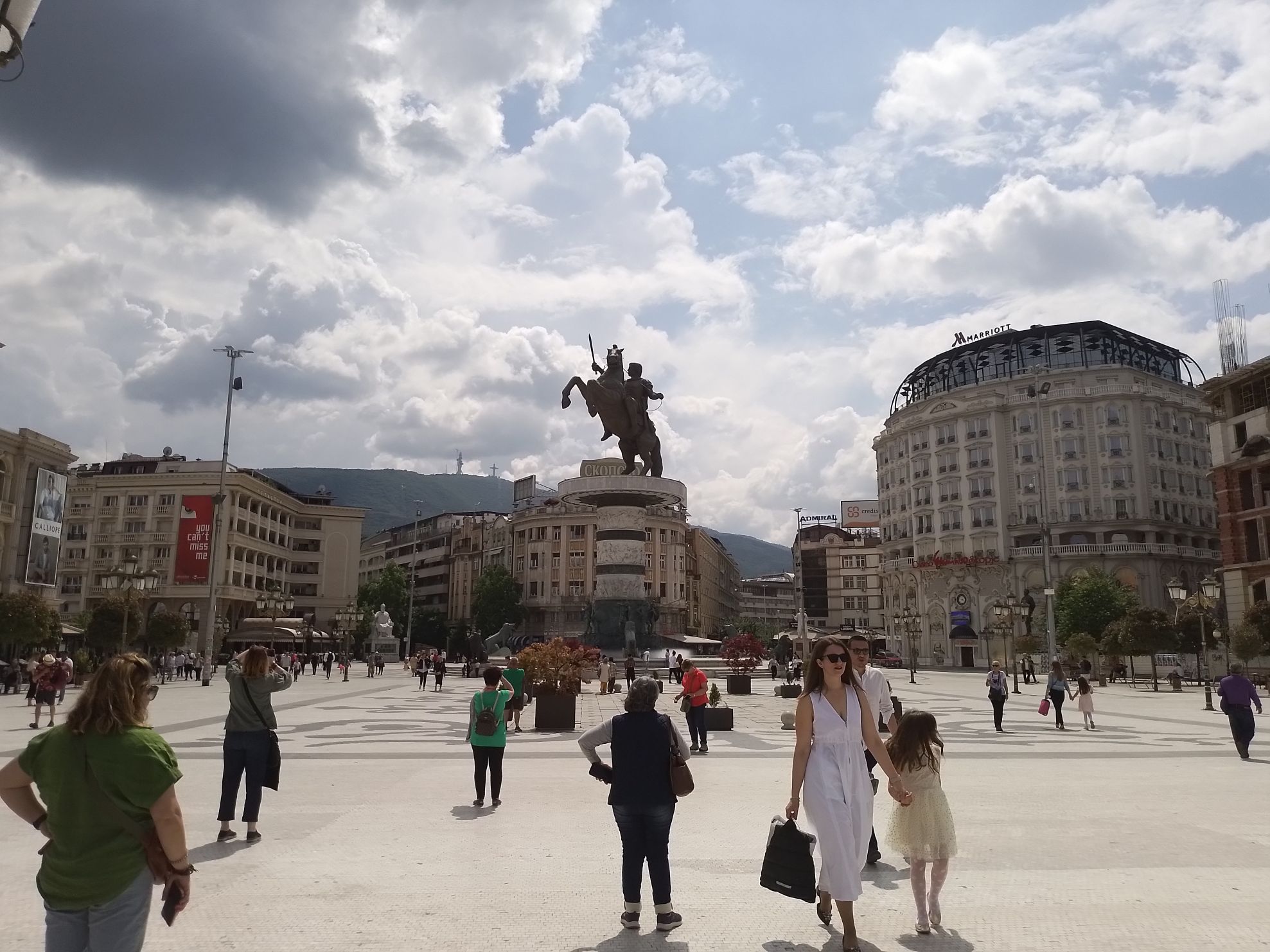 Photo / Mike Yardley
Photo / Mike Yardley
Head down 11 October Street and you’ll notice the grand form of the triumphal arch, Porta Macedonia gate and the curvaceous façade of the Marriott Hotel, celebrating belle epoque design. Numerous government buildings, theatres and museums have all been remodelled in unabashed baroque and neo-classical flair. Las Vegas’ Bellagio Hotel would not look out of place here.
After sizing up the architectural confections in Macedonia Square, we crossed over the Vardar River via the Art Bridge, with its 29 larger-than life statues of North Macedonian artists and musicians. Gaze in awe at the Museum of Archaeology with its Greek revival architecture and the newly constructed National Theatre, a replica of the former theatre destroyed by the 1963 earthquake, which killed 1000 residents.
But if you like your classic architecture to actually be classic in age, look no further than the neighbouring Stone Bridge. This masterpiece of antiquity actually dates back to the 6th century, taking pride of place on Skopje’s coat of arms and flag. It’s the main pedestrian connection between the modern city and the Carsija – the Ottoman Old Town. Breathe in the history and the aromas on a wonderful wander through the maze of narrow cobblestone streets lined with teahouses, shops and mosques. This is the largest bazaar in the Balkans, a protected national landmark, kept alive by age old traditions like coppersmiths, cobblers and goldsmiths. In its heyday, this was the second-largest Ottoman bazaar of its kind after the Grand Bazaar in Istanbul.
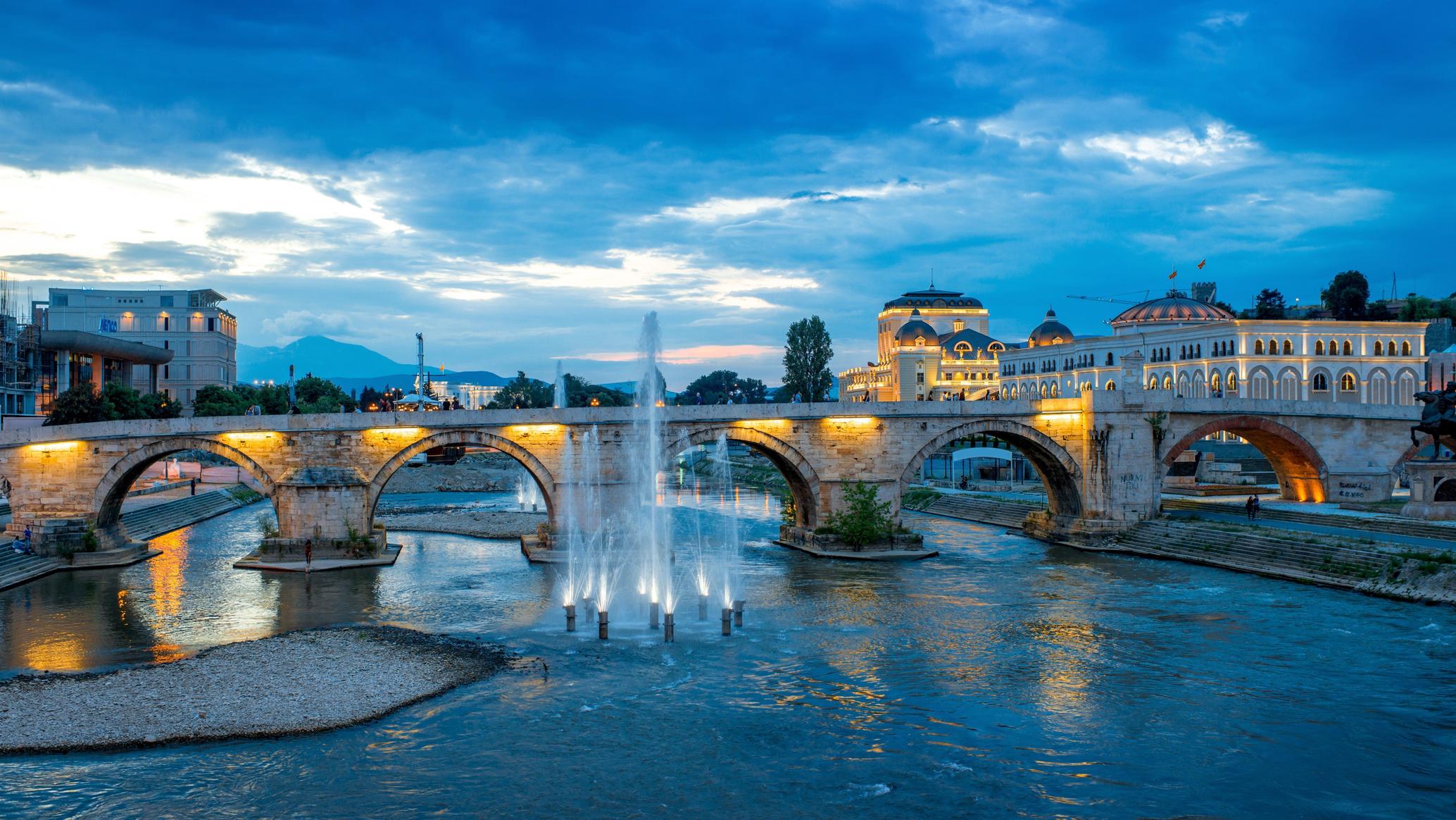 Photo / Supplied
Photo / Supplied
Stake out the historic tavern called Kapan Han which dates from the 15th century. To get a taste of Skopje café culture, sample honey-laden baklava at Slatkarnica Ohrid or a strong Turkish coffee at Nargile. Every shop in the Old Bazaar was designed to have a uniformly sized floorspace and frontage, a measure to ensure equity between Muslim and Christian traders. I dabbled heartily in traditional Macedonian cuisine, like tavce gravce (a hearty local bean dish cooked in a skillet), gevrek (sesame bread) and pastrmajlija (fried-dough pie with dried meat).
Definitely order up a traditional shopska salad – peppers, tomato, cucumber and onion sprinkled with a feta-style white cheese called sirene – for the ultimate appetiser. Leave room for dessert. A popular choice is trilece, a sponge cake soaked in evaporated milk, condensed milk and heavy cream. It’s calorific but surprisingly light and subtle in flavour - and not too sweet. Don’t leave the bazaar without indulging on glistening tulumba. These Ottoman treats are oblong-shaped, moist and sweet pastries, made from golden and crispy deep-fried dough and then soaked in sweet aromatic syrup.
Sitting on a low plateau above the Old Bazaar behind the Museum of Macedonia and beneath the fortress, Mustafa Pasha’s Mosque is one of the most beautiful Islamic buildings in the city. Completed in 1492, the design is delicious, all alabaster domes, delicate fountains and rose gardens. The delicate blue paintings under the domes at the front entrance look like Delftware pottery. Just around the corner, discover one of the only religious buildings in the Old Bazaar area that’s not a mosque.
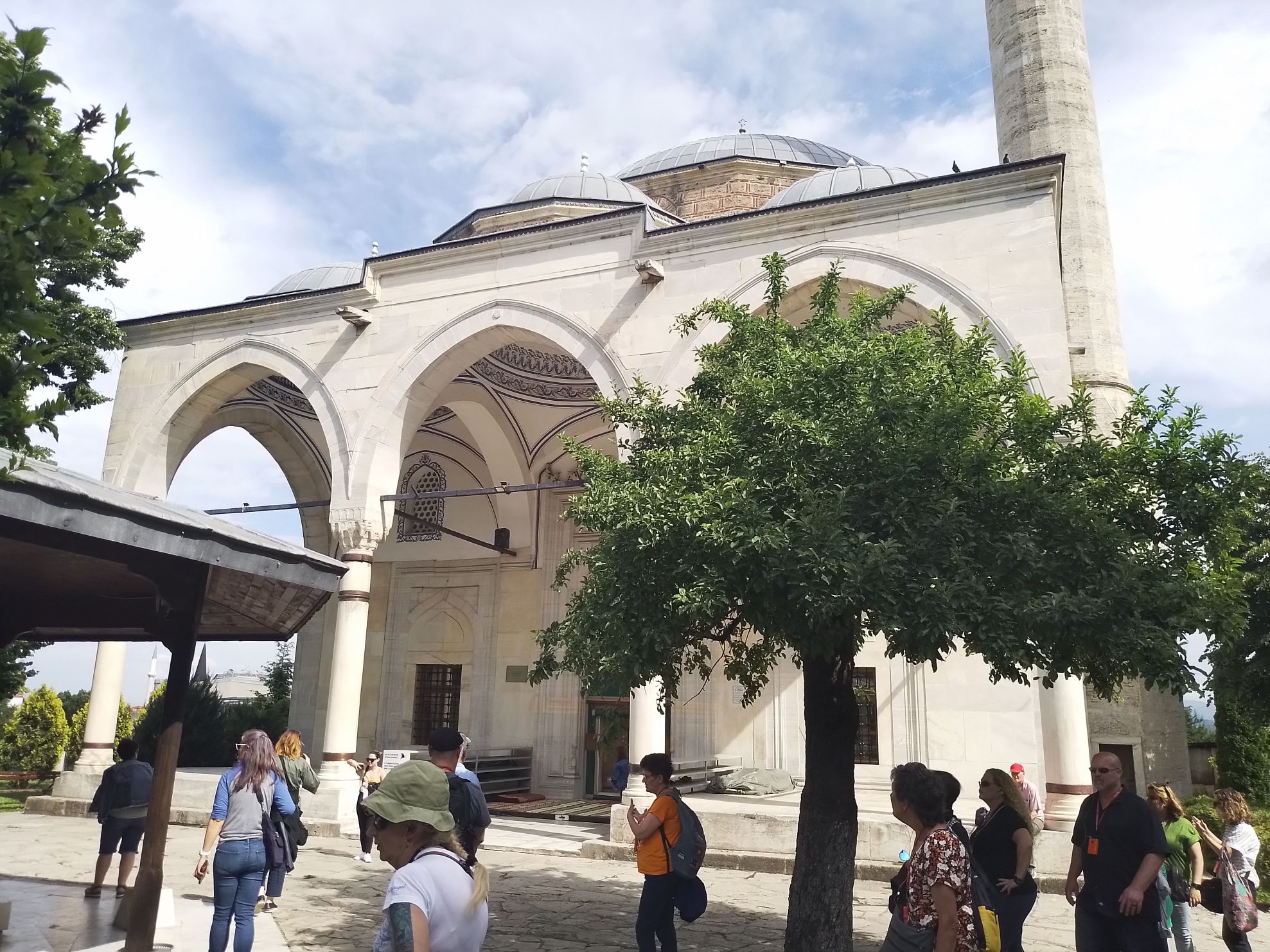 Photo / Mike Yardley
Photo / Mike Yardley
This tiny church is sealed off with a high brick wall. During the Ottoman period, the Turks forbid the construction of new churches until the last days of the Empire when the rules were relaxed. Churches like Ascension of Jesus had to comply with strict rules and weren’t allowed to feature prominently on the city’s skyline. They certainly couldn’t reach higher than a mosque’s minaret. Thus the chapel was built underground, sunken into the earth and enclosed by a high stone wall for good measure. Today you can visit the pretty courtyard and venture into the church itself.
Kale Fortress is the other landmark to earn its way onto Skopje’s coat of arms. Believed to date back to the 6th century, this plain, muscular fortress occupies the highest point in the city, overlooking the Vardar River. It’s the place to be for a show-stopping sunset over the city. Further afield, see Skopje from a completely different perspective by heading up to Mt Vodno, whether you want to strike out on the hiking trail or zip up the gondola. Not only are you rewarded with an epic view of the city, but the summit is home to the 66metre -high Millennium Cross, the largest in the world.
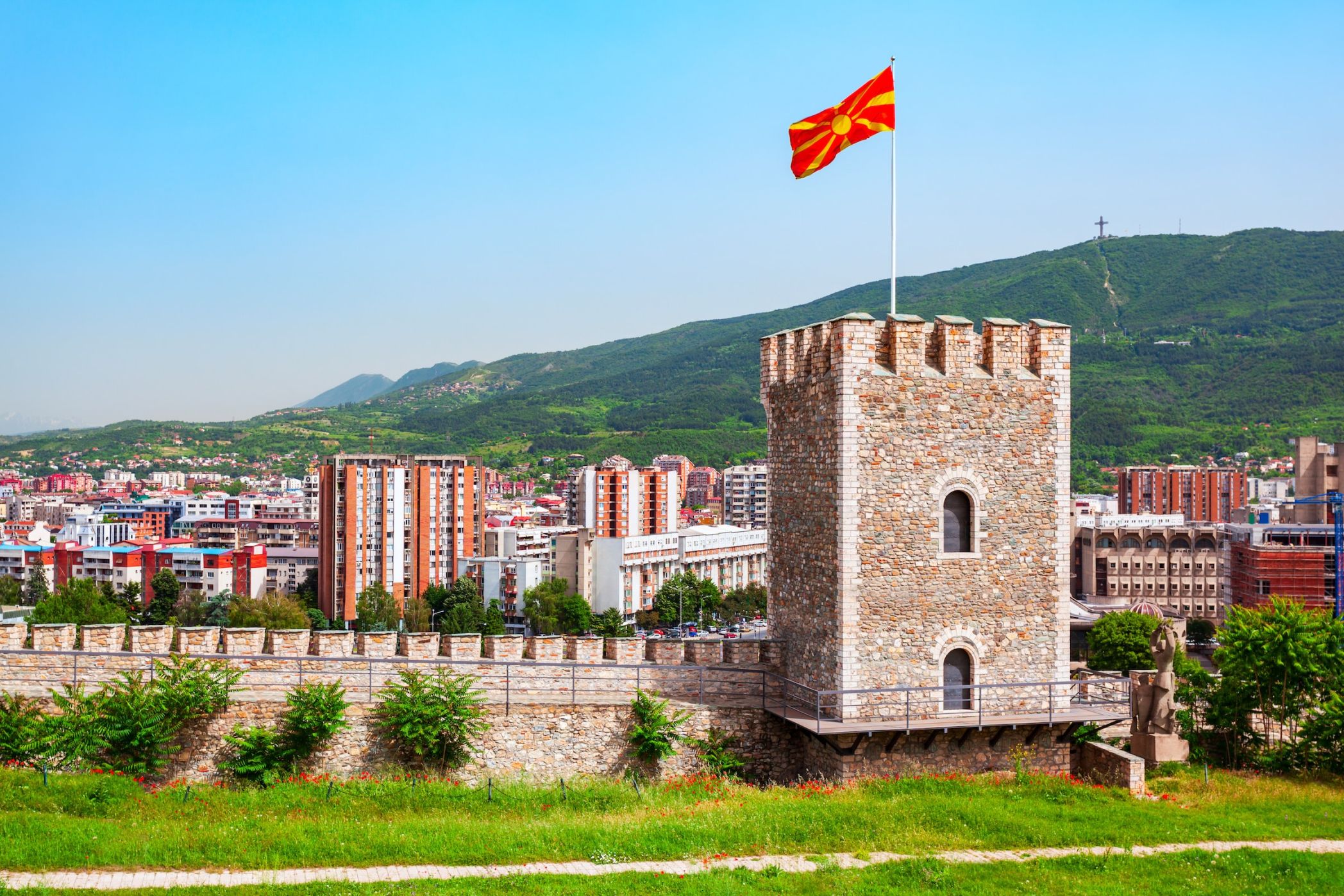 Photo / Supplied
Photo / Supplied
Alexander the Great might be the nation’s most famous son, but Mother Theresa is unquestionably her most famous daughter. The Memorial House Mother Teresa is the main landmark dedicated to the Nobel Prize-winning nun and saint. This eclectic church was built in 2009 as a memorial to Mother Theresa, who was born in Skopje in 1910 and spent her formative years here.
It was constructed on the site of an older church, where Mother Teresa was baptised the day after her birth. It features a permanent exhibition focused on the saint’s early life, when Skopje was still part of the Ottoman Empire. There’s a touching display of photographs, news clippings and personal items associated with her life, including her signature white-and-blue striped sari and a copy of the Nobel Peace Prize she received in 1979.
Trafalgar’s amazing Balkan Adventure is a 14 day tour, spanning seven countries and 13 cities. For 2024 tour dates, prices start from $5,895 per person, twin share. www.trafalgar.com/en-nz/tours/balkan-adventure
Mike Yardley is our resident traveller on Jack Tame Saturday Mornings.
Take your Radio, Podcasts and Music with you









